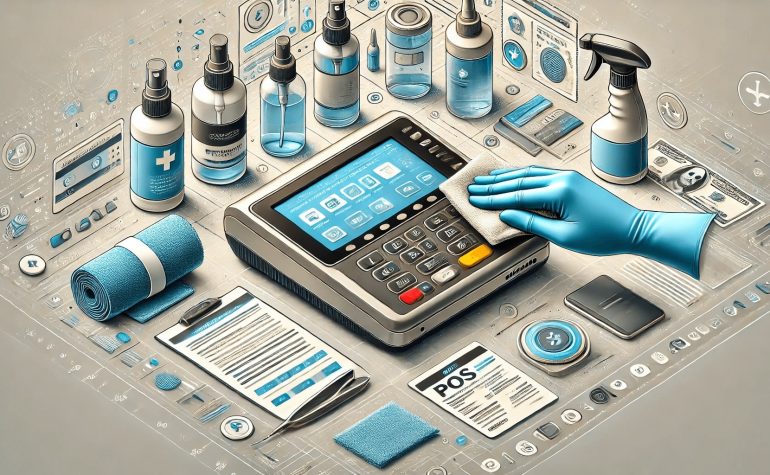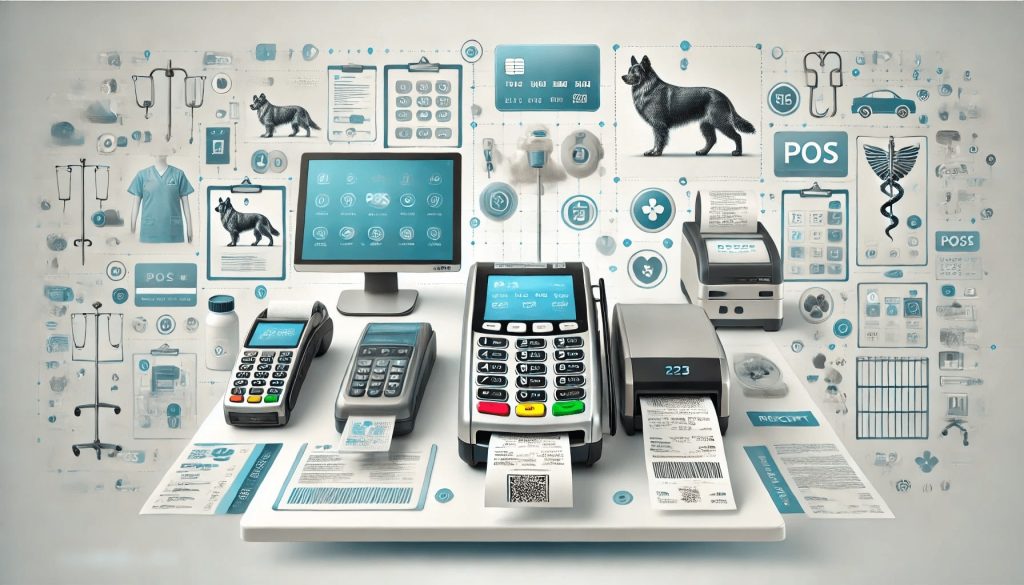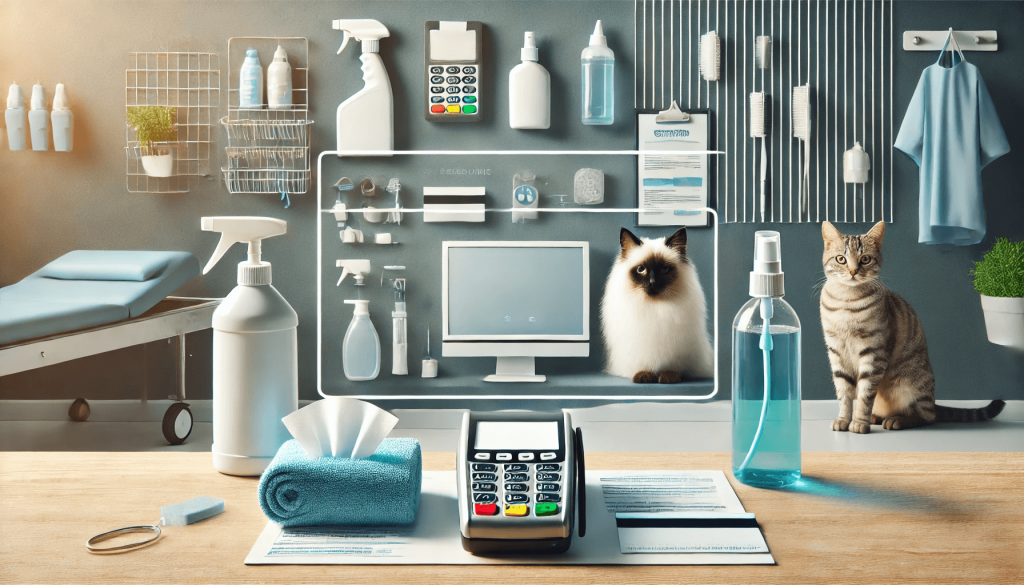
By alphacardprocess October 5, 2024
In veterinary clinics, pos equipment plays a crucial role in facilitating smooth transactions and providing efficient services to clients. However, it is essential to recognize the importance of cleaning and sanitizing this equipment regularly to maintain a clean and hygienic environment.
This article will provide a comprehensive guide on cleaning and sanitizing point of sale (POS) equipment in veterinary clinics, including the importance of regular cleaning, understanding different types of POS equipment, step-by-step cleaning procedures, recommended cleaning products and techniques, common mistakes to avoid, establishing a cleaning schedule, training staff on proper procedures, frequently asked questions, and a conclusion.
Importance of Regular Cleaning and Sanitizing in Veterinary Clinics
Maintaining a clean and sanitized environment in veterinary clinics is crucial for the health and safety of both animals and humans. Regular cleaning and sanitizing of POS equipment are essential to prevent the spread of harmful bacteria, viruses, and other pathogens. Veterinary clinics often deal with sick animals, and the equipment used during transactions can become contaminated with various microorganisms. Failure to clean and sanitize point of sale (POS) equipment can lead to cross-contamination, resulting in the transmission of diseases.
Furthermore, a clean and well-maintained veterinary clinic creates a positive impression on clients. It demonstrates professionalism, attention to detail, and a commitment to providing high-quality care. Clients are more likely to trust a clinic that prioritizes cleanliness and hygiene. Regular cleaning and sanitizing of POS equipment also extend the lifespan of the equipment, reducing the need for frequent repairs or replacements.
Understanding the Different Types of POS Equipment in Veterinary Clinics

Veterinary clinics utilize various types of point of sale (POS) equipment to streamline their operations and enhance customer experience. Understanding the different types of equipment is essential for effective cleaning and sanitizing. Some common types of POS equipment found in veterinary clinics include:
- Cash Registers: Cash registers are used to process cash transactions and keep track of sales. They often have touch screens, keyboards, and receipt printers.
- Credit Card Terminals: Credit card terminals allow clients to make payments using their credit or debit cards. These terminals may have touch screens, keypads, and card readers.
- Barcode Scanners: Barcode scanners are used to scan product barcodes for accurate pricing and inventory management. They are often handheld devices that connect to the POS system.
- Receipt Printers: Receipt printers are used to print receipts for clients after transactions. They may be thermal or impact printers.
- Touchscreen Monitors: Touchscreen monitors are increasingly popular in veterinary clinics as they provide a user-friendly interface for staff and clients to navigate through the POS system.
Step-by-Step Guide to Cleaning and Sanitizing POS Equipment
Cleaning and sanitizing POS equipment should be a regular part of the veterinary clinic’s cleaning routine. Follow this step-by-step guide to ensure thorough cleaning and sanitizing:
- Power Off: Before cleaning any POS equipment, ensure that it is powered off and disconnected from any power source. This prevents any electrical accidents and protects the equipment from damage.
- Remove Debris: Use a soft, lint-free cloth to remove any visible debris, dust, or dirt from the equipment. Pay attention to crevices, buttons, and touch screens.
- Cleaning Solution: Prepare a cleaning solution by mixing a mild detergent or disinfectant with water. Follow the manufacturer’s instructions for the appropriate dilution ratio.
- Damp Cloth: Dip a clean cloth into the cleaning solution and wring out any excess liquid. The cloth should be damp, not dripping wet, to avoid damage to the equipment.
- Wipe Surfaces: Gently wipe all surfaces of the POS equipment, including touch screens, keyboards, buttons, and casings. Pay extra attention to areas that come into direct contact with hands or are prone to contamination.
- Disinfecting Solution: After cleaning, prepare a disinfecting solution by mixing an appropriate disinfectant with water. Ensure that the disinfectant is safe for use on electronic equipment.
- Disinfecting Cloth: Dip a separate cloth into the disinfecting solution and wring out any excess liquid. Wipe all surfaces of the POS equipment again, ensuring thorough coverage.
- Allow Drying: Allow the equipment to air dry completely before reconnecting or powering it back on. This prevents any damage that may occur due to moisture.
- Cleaning Accessories: Clean any accessories such as barcode scanners or card readers separately using the same cleaning and disinfecting procedures.
- Wash Hands: After cleaning and sanitizing the POS equipment, wash your hands thoroughly with soap and water to maintain personal hygiene.
Recommended Cleaning Products and Techniques for POS Equipment

Choosing the right cleaning products and techniques is crucial to ensure effective cleaning and sanitizing of POS equipment. Here are some recommended cleaning products and techniques:
- Cleaning Solutions: Use mild detergents or disinfectants specifically designed for electronic equipment. Avoid using harsh chemicals or abrasive cleaners that can damage the equipment.
- Microfiber Cloths: Microfiber cloths are ideal for cleaning POS equipment as they are soft, lint-free, and non-abrasive. They effectively remove dirt and fingerprints without scratching the surfaces.
- Isopropyl Alcohol: Isopropyl alcohol is an effective disinfectant for electronic equipment. It evaporates quickly, leaving no residue behind. Use it sparingly and ensure it is safe for use on the specific equipment.
- Compressed Air: Compressed air can be used to remove dust and debris from hard-to-reach areas such as keyboard crevices or barcode scanner openings. Ensure that the air pressure is not too high to avoid damaging the equipment.
Common Mistakes to Avoid When Cleaning and Sanitizing POS Equipment
While cleaning and sanitizing POS equipment, it is essential to avoid common mistakes that can lead to damage or ineffective cleaning. Here are some mistakes to avoid:
- Using Excessive Moisture: Avoid using excessive moisture during cleaning as it can seep into the equipment and cause damage. Always wring out any excess liquid from the cleaning cloth.
- Using Harsh Chemicals: Harsh chemicals or abrasive cleaners can damage the surfaces of POS equipment. Stick to mild detergents or disinfectants specifically designed for electronic equipment.
- Neglecting Accessories: Accessories such as barcode scanners or card readers also require regular cleaning and sanitizing. Neglecting these accessories can lead to cross-contamination.
- Skipping Drying Time: Allowing the equipment to air dry completely is crucial to prevent damage. Skipping the drying time can lead to moisture buildup and potential malfunctions.
Establishing a Cleaning Schedule for POS Equipment in Veterinary Clinics
To ensure consistent cleaning and sanitizing of POS equipment, it is essential to establish a cleaning schedule. Consider the following factors when creating a cleaning schedule:
- Frequency: Determine how often the POS equipment should be cleaned based on the clinic’s foot traffic, the number of transactions, and the level of contamination. High-traffic clinics may require daily cleaning, while low-traffic clinics may only need weekly cleaning.
- Shift Changes: Incorporate cleaning and sanitizing into shift change routines to ensure that all equipment is cleaned regularly. Assign specific staff members responsible for cleaning duties during shift changes.
- Busy Periods: Identify the clinic’s busiest periods and allocate additional cleaning time during these periods. This helps maintain cleanliness even during peak hours.
- Documentation: Keep a record of the cleaning schedule to track when each piece of equipment was last cleaned. This ensures accountability and helps identify any gaps in the cleaning routine.
Training Staff on Proper Cleaning and Sanitizing Procedures
Proper training of staff members is crucial to ensure that they understand and follow the correct cleaning and sanitizing procedures for POS equipment. Here are some tips for training staff:
- Provide Detailed Instructions: Clearly explain the step-by-step cleaning and sanitizing procedures to all staff members. Use visual aids, such as posters or videos, to reinforce the instructions.
- Demonstrate Proper Techniques: Conduct hands-on training sessions where staff members can observe and practice the correct cleaning techniques. Provide feedback and guidance to ensure they understand the procedures.
- Emphasize Importance: Explain the importance of cleaning and sanitizing POS equipment in maintaining a clean and hygienic environment. Highlight the potential risks of cross-contamination and the impact on client trust.
- Regular Refreshers: Conduct regular refresher training sessions to reinforce proper cleaning procedures and address any questions or concerns from staff members.
Frequently Asked Questions
Q.1: How often should POS equipment be cleaned in a veterinary clinic?
The frequency of cleaning depends on the clinic’s foot traffic, the number of transactions, and the level of contamination. High-traffic clinics may require daily cleaning, while low-traffic clinics may only need weekly cleaning.
Q.2: Can I use regular household cleaning products on POS equipment?
It is recommended to use mild detergents or disinfectants specifically designed for electronic equipment. Regular household cleaning products may contain harsh chemicals that can damage the equipment.
Q.3: Should I clean accessories such as barcode scanners separately?
Yes, accessories such as barcode scanners or card readers should be cleaned separately using the same cleaning and sanitizing procedures as the main POS equipment.
Q.4: How long should I allow the equipment to air dry?
It is recommended to allow the equipment to air dry completely before reconnecting or powering it back on. This usually takes around 15-30 minutes, depending on the humidity levels.
Conclusion
Cleaning and sanitizing POS equipment in veterinary clinics is essential for maintaining a clean and hygienic environment, preventing cross-contamination, and ensuring client trust. Regular cleaning and sanitizing not only protect the health and safety of animals and humans but also extend the lifespan of the equipment.
By following the step-by-step guide, using recommended cleaning products and techniques, avoiding common mistakes, establishing a cleaning schedule, and training staff on proper procedures, veterinary clinics can ensure that their POS equipment remains clean, functional, and reliable. Prioritizing cleanliness and hygiene in veterinary clinics is a testament to the commitment to providing high-quality care and professionalism.